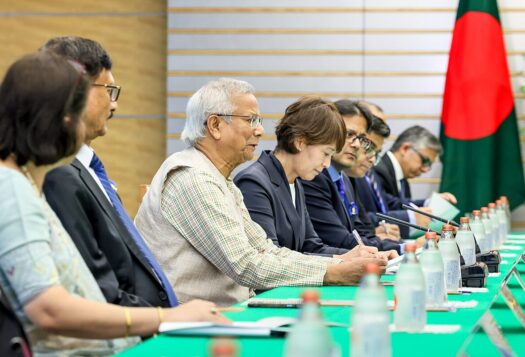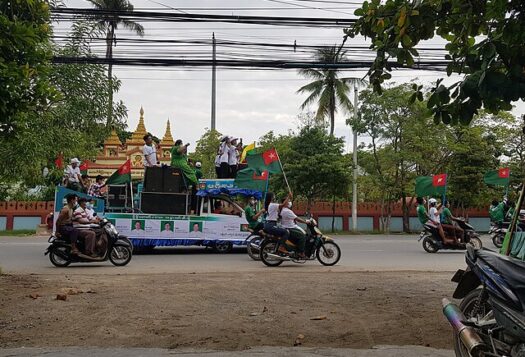
Both India and Pakistan saw record-breaking representation of female legislators in their last elections. In India, more than 700 women contested seats in the Lok Sabha in the 2019 general elections, of which 78 (about 11 percent) secured seats—the highest number of victorious female candidates in the electoral history of India. In Pakistan, the 2018 general election also had the highest number of female candidates running for parliament. However, only 8 out of 183 (about 4 percent) female contestants won seats in Pakistan’s National Assembly.
Although the gender gap in the parliament of both countries is still high, the political individuality of female legislatures in India, arising from their active political struggle from the grassroots level, presents important lessons for Pakistan. Pakistani political parties could potentially look toward India if they are serious about ending patriarchal political culture in the next elections.
Bringing Change at the Lowest Level
In Pakistan, the Election Act (2017) criminalizes any effort to hinder female participation in elections, as either a voter or a candidate. The act also requires political parties to have a minimum of five percent of female candidates contesting in general elections for both national and provincial assemblies. In the 2018 elections, all mainstream national parties kept close to the minimum percentage, while over 45 percent of political parties did not field a single female candidate. Thus, while many parties did not follow the act, those that followed it chose female candidates just to meet the quota. Most female candidates were strategically given tickets for constituencies in which the party had no chance of winning. Many of these contestants did not even campaign for elections or share their pictures on banners.
In addition to quota representation in elections, the National Assembly of Pakistan has 60 reserved seats for women. However, due to a system of indirect elections, political parties award these reserved seats through nepotism and favoritism instead of qualifications or gender. For example, the list of female candidates for reserved seats by Pakistan Muslim League-Nawaz (PML-N) has remained confined to women that have close familial links with the party’s male leadership.
Aside from legal framework for the national level, General Musharraf’s Local Government Plan introduced a 33 percent quota for women in district, municipality, and union councils in 2000, bringing almost 100,000 women into politics across Pakistan. After the National Assembly passed the 18th amendment to the constitution of Pakistan in 2010, the provincial governments secured more resources and power to legislate from the center. Since then, the local government law of all provinces, presented in 2013, have implemented a system of reserved seats for women, but their success varies across provinces. For instance, in 2015 cantonment elections, only two women were elected out of total 199 seats, results that clearly fail to meet Musharraf’s 33 percent quota. In Balochistan, Khyber Pakhtunkhwa, and other areas with relatively conservative populations, the rate of female contestation for reserved seats is so low that most female councilors elected ran unopposed. In Punjab and Sindh, where women’s participation is much higher than the other two provinces, the quota for female councilors was reduced to 15 and 22 percent respectively.
India has no legislative quota for female legislators in the Lok Sabha or Rajya Sabha (Upper House of Parliament). While national parties are not required to have female contestants in general elections, a constitutional provision demands that 33 percent of village council seats be reserved for women. The main goal of these constitutional provisions is to close the gender gap at the lowest level. A quota system at the lowest level might allow for ambitious women to be prepared for political office at the outset of their careers. It also makes the public more accepting of female leadership.
While the Indian constitution reserves a third of village council seats for women, there are reports that spouses or fathers similarly use these women village councilors as pawns in their own power games. However, with time, as these women attain political success and maturity through their term in office, they gain independence with experience. In contrast, most female politicians in Pakistan directly enter politics via reserved seats without contesting elections. They do not have a constituency. They have no chance to campaign or appeal to voters. Therefore, their chances of becoming politically strong over time are low.

Fielding Independent Women with Political Individuality
Victorious female candidates in the 2019 Lok Sabha elections have political careers built through years of struggle. They have climbed up the ranks in their respective political parties by gradually gaining roots in their constituencies.
Victorious female candidates in the 2019 Lok Sabha elections have political careers built through years of struggle. They have climbed up the ranks in their respective political parties by gradually gaining roots in their constituencies. Smriti Irani, who won with a margin of 55,120 votes against none other than Rahul Gandhi, the president of Indian National Congress, has a humble political background. While her family was politically active and members of right-wing political parties, she was the first in her family to become a member of parliament. Similarly, Sadhvi Pragya defeated a strong Congress candidate Digvijay Singh by a margin of 364,822 votes. Like Smriti, her family was politically active but had no prominent political positions. Among female political leadership in India, names like Mamata Banerjee (Chief Minister of West Bengal since 2011) inspire women to pursue a political career without familial political backing. Born in a middle class Bengali family, it took her four decades of continuous political struggle to become the first female Chief Minister of West Bengal in 2011. The party she founded, All Indian Trinamool Congress, has awarded 41 percent of its tickets to female candidates in 2019 elections.
Unfortunately, examples like Smriti, Sadhvi, and Mamata are hard to find in Pakistan. The dynastic culture in political parties support female politicians with a strong family background. Almost all of the eight elected candidates belong to powerful political families. For example, Mehnaz Aziz is wife of former federal minister, Daniyal Aziz. Ghulam Bibi Bharwana is the granddaughter of a former member of the National Assembly (MNA), Ghulam Haider Bhurwana. The Bhurwana family has had a strong political presence in the Jhang district for years. Nafisa Shah is daughter of former Chief Minister of Sindh, Qaim Ali Shah, and belongs to a politically strong feudal family. Shazia Marri represents another strong Marri tribe and is a daughter of an established politician and MNA, Atta Muhammad Marri. Fahmida Mirza is daughter of a former MNA and wife of former Home Minister, Zulfiqar Mirza.
In large part, the votes these female politicians win are for their families more than their political parties. As such, these women may be more inclined toward maintaining the status quo, which is the concentration of power in dynastic political parties, rather than challenging the system to close to the gender gap.
Encouraging Women to Vote
Despite the increase in women voters in both India and Pakistan, the gender gap in Pakistan remains a concern. In 2019, the gap between male and female Indian voters was only 0.4 percent. In many states, female voter turnout was higher than males. In Pakistan, about 43.62 percent of voters were female in 2013 elections, which was reduced to 39.78 percent in the 2018 elections. The decline in women voter turnout and the high gender gap in voter turnout remained underreported. Increasing women’s participation in voting makes political parties more attentive to female empowerment issues. For instance, during the campaign for the Lok Sabha elections in 2019, nearly all parties came up with slogans advocating women’s rights. A survey conducted during the Lok Sabha elections of 2019 found women’s empowerment to be among the top ten most important election issues.
Pakistan’s method of adding reserved seats in the parliament might contribute to increase in women legislatures but does not necessarily bring better legislation on women issues or inclusivity for women without political connections.
Being representative democracies, India and Pakistan similarly need to increase women representation in their legislative assemblies. Female empowerment, however, is not simply about increasing the number of women in parliament. Pakistan’s method of adding reserved seats in the parliament might contribute to increase in women legislatures but does not necessarily bring better legislation on women issues or inclusivity for women without political connections. For real change, Pakistan should consider following India’s example in creating a space where women without political ties and links could be encouraged to run for office. While laws are important for setting the stage for gender equality, real change must come from within political parties.
***
Click here to read this article in Urdu.
Image 1: Kartikeya Kaul via Flickr
Image 2: Paula Bronstein via Getty Images


